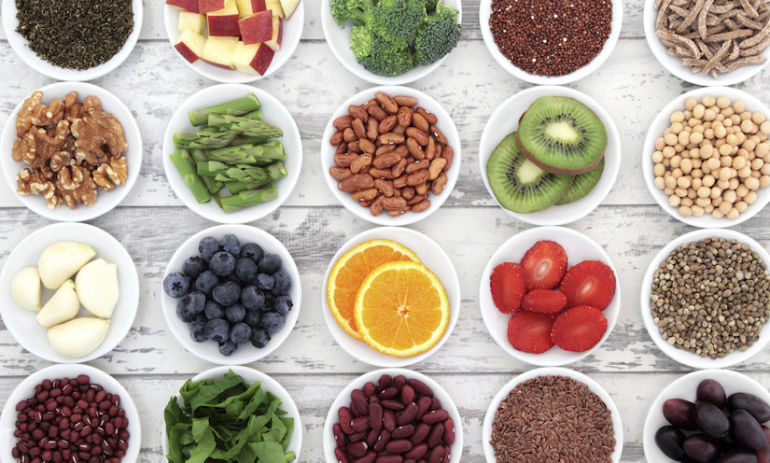Raw Food Diet - What's It All About?
Why Eat Raw Food?
The core concept behind the raw diet is that food is most nutritious for human beings if eaten raw. Proponents of this diet claim that heating food items to a temperature of above 118 degrees Fahrenheit leads to a loss of healthy vitamins as well as essential enzymes that the body needs. Enzymes are very important elements in the raw lifestyle, and are thought to be capable of interacting with numerous bodily processes. Starving the body of precious enzymes is said to cause premature aging, digestive issues and unwanted weight gain, to name but a few suggested dangers.
It is common knowledge that heating foods to a certain temperature alters their cell structure. Additionally, most nutrients are greatly reduced or even destroyed by heat, while other substances found in foods can become potentially harmful when exposed to high temperatures (such as burned oils, which are carcinogenic). On the other hand, a few healthful substances are greatly increased by heat exposure, such as the lycopene found in tomatoes.
What Do I Eat On a Raw Food Diet?
For a diet to qualify as "raw", at least 70% of the food eaten must be in a raw state. This does not completely exclude the possibility of eating cooked foods, and some people like to include a few cooked items, while others prefer to go entirely raw. A raw food diet can be ovo-lacto vegetarian, vegan, or even meat inclusive, depending on each individual's personal preference.
Health food enthusiasts typically undergo a detox process either before embracing an all raw diet, as an occasional cleanse, or even once or twice per year as part of their upkeep routine. A detox usually lasts for 3 to 21 days.
How Do I Prepare Raw Foods?
Soaking and Sprouting:
Two typical methods of preparing foods while keeping them raw are soaking and sprouting. Soaking is used to hydrate dry foods such as beans, nuts, seeds or other legumes, and it can last from two hours to a whole day, but most dieters soak foods overnight. After soaking the beans, nuts, seeds or legumes, they can either be consumed as they are, or set aside to sprout.
Dehydrating:
Since raw food cannot be heated to above 118 degrees Fahrenheit, some dieters use a dehydrator to alter the texture of food. This means warming foods at low temperatures, reminiscent of sun-drying, to preserve all the nutrients intact. This is a very useful process for obtaining dry foods, such as crackers, breads, chips, croutons and more.
Blending:
Smoothies, juices and natural soups are important parts of a raw diet, and various greens and fruits are usually blended together to obtain them.
What Equipment is Used to Prepare Raw Food?
Several tools are employed by raw dieters to prepare their meals, and these can include: blender, thermometer, dehydrator, juicer, food processor, spiral slicer, large containers for soaking and sprouting, etc.
Besides Cooked Food, What Foods Should I Avoid?
A number of plants and vegetables are labeled as unsafe to eat raw, due to their risk of food-poisoning, and these include: fava beans, soy beans, kidney beans, mushrooms, peas, potatoes, buckwheat greens, rhubarb leaves, taro, cassava, and several others. Raw foodists are also careful about foods grown with additives, pesticides and preservatives.
What are the Benefits of a Raw Food Diet?
A raw diet is said to bring numerous benefits to health, including increased energy levels, younger looking skin, healthier body-weight and reduced vulnerability to many types of illnesses. It is also low in trans fats, salt, sugars, and high in healthy minerals and vitamins. A raw diet is also thought to reduce acidity in the body, promote cardiovascular health, lower the risk of diabetes and increase lifespan.
What are the Concerns of the Raw Food Diet?
While the raw diet provides impressive amounts of healthy vitamins, it may also lead to deficiencies in a few important nutrients, such as vitamin B12, iron and healthy fats. Some raw food eaters prefer to take vitamin supplements, while others believe that eating a balanced and varied raw diet can counteract these effects. People with food sensitivities, a history of certain disorders or diabetes, should approach a raw diet with caution.
Side Effects:
A common side effect of starting a raw food diet is driving the body into a detox reaction, which may involve withdrawal symptoms from things like sugars, coffee and additives.
Tips:
Changing your diet habits should be a smooth process, so it is important to gradually reduce the processed foods intake, while replacing them with healthy raw foods. Switching to raw cold-turkey may be too abrupt for your body. It is also important to have a varied recipe list at your disposal, to avoid starving yourself or depriving yourself of important nutrients.
-
Natural Weight Loss - The Safe Way To Lose Weight
Are you sick and tired of that extra wei
-
Questlove: Healthier, Happier & Beating To A New Drum
You know him, but just may know his name. Drummer, afro
-
Michael Jackson: Anorexia?
For the past two nights Ive been watching Michael Jackson videos on
-
Tips On Medicaid
Medicaid can be confusing if you are not familiar with it. If you have
-
Deal With Your Weight Loss Issues Today
On the average, one out of every five people is overweight and at leas
-
What To Expect After Gastric Bypass Surgery
Most patients recover after gastric bypass surgery without complicatio
- DON'T MISS
- Best Foods For Weight Loss
- Leptin Supplements & Weight Loss
- When You Ought to Utilize Diet Pills For Rapid Weight Loss
- Best Diet and Fitness Tips for Men & Women
- Types Of Weight Loss Pills
- Kill Obesity Before Obesity Kills You
- Reduce Weight With Cinnamon And Chromium Combo
- Is The Cure Herbal Weight Loss Pills?
- Top 10 Diet Foods of All Time
- Food Combinations for Burning Fat




